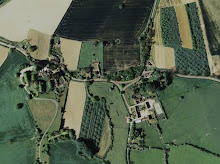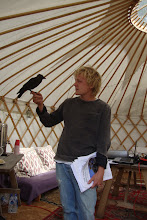.jpg)
Last month I hired this 'DR mower' to make a start at cutting the grass in the 1920s orchard while the ground was still hard. As you can see, five years of growth has left it looking pretty tropical! This 'rank' vegetation is really good for small mammals (and the things that feed on them) and provides cover for all the birds that nest in the trees. However it is largely made up of coarse grasses such as Cocksfoot, False Oat Grass, Yorkshire Fog and Perrenial Rye grass that outcompete most wildflowers and thus limit nectar supplies for insects. Tall vegetation can limit air movement around the trees and this is detrimental for the development of fruit and can promote fungal infections in the tree.
.jpg)
.jpg)
When the orchards were under commercial use the grass swards were fertilized quite regularly. This has had a couple of unfortunate consequences for my restoration.
1) Coarse grasses and nutrient-loving plants (e.g. nettles, hogweed, docks, creeping thistle, cow parsley) have come to dominate preventing less competitive wildflowers from co-existing.
2) Without consistent management the orchards quickly become overgrown.
Simply cutting the grass is no long-term solution as the nutrient status of the soil remains unchanged. To re-establish wildflowers the soil muct be stripped of nutrients either by removing the cut material and not letting it rot down (= hard work), or grazing with sheep/cows/geese (=need fencing, wire to protect trees, animals..!). I am yet to find the best solution.
.jpg)
This photo sums up what I want to achieve with this strimming. The maximum biodiversity potential for the orchard will incorporate the greatest range of diffferent habitats. Areas of long grass will be left for small mammals (and forage for birds of prey), insect overwintering sites and bird cover. Areas of short grass will imporve the health of the fruit and trees, provide opportunity for less vigorous plant species and allow sun to warm standing dead wood and aid insect larval development.



No comments:
Post a Comment